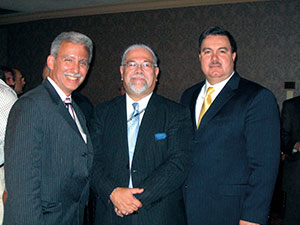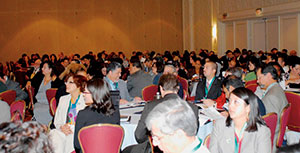With the selection of Hilda Solis at the Department of Labor and Ken Salazar at the Department of Interior, Hispanics now comprise 13% of President Obama’s cabinet. While these selections provide examples of meaningful contributions that Hispanics make at the highest levels of the Federal government, most might be surprised to learn that Hispanics represent only 7.9% of the federal workforce as compared to 13.2% of the civilian workforce. Alarmingly, the gap between the Hispanic representation in the federal sector and Hispanics in the Civilian Labor Force has significantly widened. In fact, the gap has almost doubled in the last ten years (3% in 1988 and 5.3% in 2008). This problem is exacerbated by the high separation rate of Hispanics—which negates much or all of the gains made in their recruitment. “It is inconceivable that 39 years after the Nixon White House issued a Sixteen-Point Federal Employment Plan for Hispanics, innumerable blue ribbon commission, tiger teams, and voluminous reports and employment tool kits, that federal officials have not mastered this challenge” remarked Milton Belardo, Chair of the National Council of Hispanic Employment Program Managers.
Hispanic representation in the career senior executive service and the developmental pool in grades 14 and 15 is less than desirable. According to the 2008 FEORP Report, Hispanics represented 9.9% (33,419) of all employees in grades 5 through 8, and 9% (44,398) of all employees in grades 9 through 12. Yet, Hispanics only make up only 3.6% (236) of the SES slots, 4.1% (2,420) of the GS-15s, and 4.6% (4,191) of the GS-14s in FY-2007. “There is an inverse relationship between grade distribution and Hispanic representation. The higher the grades, the lower the Hispanic representation. We all need leaders to emulate, a major factor for the family-centered Hispanic community,” stated Jorge Ponce, Co-Chair, Council of Federal EEO and Civil Rights Executives.
Commenting on the above, Eugenio Ochoa-Sexton, DHS Executive Director, Diversity; Office of the Chief Human Capital Officer, U.S. Department of Homeland Security, opined that “failure to promote Hispanics into leadership grades will likely have adverse consequences for future recruitment efforts. Hispanic sons and daughters will listen and be influenced by the success or lack thereof made by their parents in penetrating the glass ceiling.”
Discussions on the lack of progress that Hispanics have made in the Federal Government, as well as prevalent myths and stereotypes for not hiring and promoting them, often permeate the Government halls. What is uncommon is the proffering of solutions to tackle these challenges. The career advancement summit described below aims to meaningfully do just that.
To deal with the Hispanic leadership vacuum, Ramón Surís-Fernández, Director for the Civil Rights Center within the Department of Labor, initially proposed a career advancement summit targeting this group during the 22 May 2007 Office of Personnel Management (OPM)-sponsored Interagency Taskforce on Hispanic Employment in the Federal Government biannual meeting. (At the time, Mr. Surís Fernández served as the Deputy Assistant Secretary for Equal Employment Opportunity and Civil Rights, Department of the Army.) Shortly thereafter, Mr. Surís-Fernández convened a group of Hispanic leaders within the federal community and together planned the First Annual Federal Hispanic Career Advancement Summit. The Summit goal was to develop individual leadership competencies to help advance participants’ careers in the federal sector – with an Executive Coaching session focusing on assisting those who were at the brink of the SES rank.
The First Annual Federal Hispanic Career Advancement Summit was held on October 1, 2008, at the Crystal Gateway Marriott, located in Arlington, Virginia. Based on the overwhelming success of meeting the registration cap of 650 people a few days after registration opened, the Second Annual Federal Hispanic Career Advancement Summit is being planned to accommodate 1,000 people and is tentatively scheduled for September 17, 2009.
To underscore the urgency of the challenge, this year’s theme is “Change, Challenges, and Opportunities.” The Summit aims to be one of the highlights of National Hispanic Heritage Month, which is celebrated annually from September 15 through October 15.
Open to all federal employees, the Summit will offer ten workshops in three tracks ranging from effective communication skills to strategies for building coalitions. There will be two executive coaching sessions, one for employees in grades GS 13-14 and another for those in grades GS-15 to be paired with members of the Senior Executive Service on a three to one ratio.
On top of providing information to enhance the advancement of the talent needed to meet the challenges of the new millenium, the Summit also provides an oppportunity to network and develop professional relationships. For additional information concerning this activity, you may visit the Summit’s website at www.federalhispanicsummit.org. Remember, it is time to discard past excuses and embrace the fierce urgency of now!
Jorge Ponce




